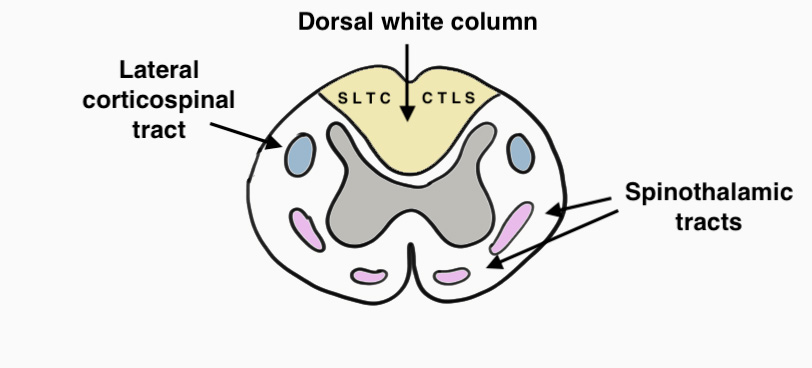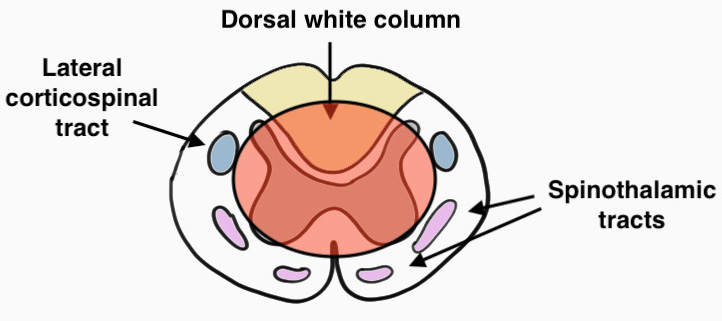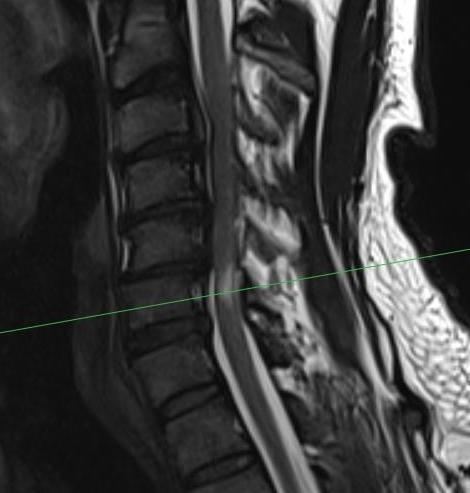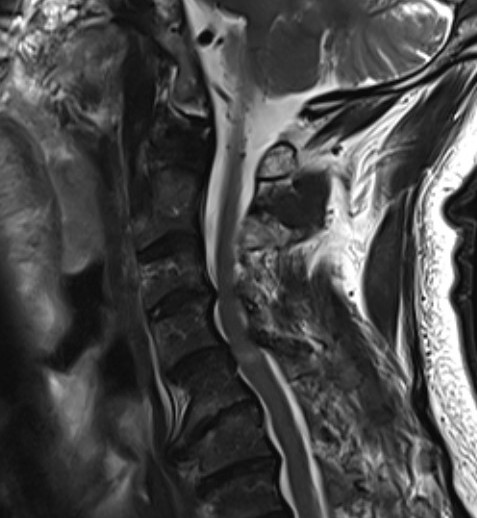Definition
Incomplete spinal cord injury secondary to trauma
Motor weakness upper limb > lower limb
Lower extremity motor score [LEMS] - upper extremity motor score [UEMS] ≥ 5
Epidemiology
Most common pattern cord injury
- 25% of all spinal cord injuries
Bimodal age distribution
1. <45
- high velocity injury
- vertebral fractures
2. Older patients with low energy injuries
- pre-existing cervical degeneration and stenosis
- simple fall with hyper-extension injury
Usually C3/4 and C4/5
Anatomy

Dorsal Columns
- light touch, vibration & proprioception
- cervical fibres central, sacral fibres lateral
Lateral Corticospinal Tract
- motor tract
- cervical fibres central, sacral fibres peripheral
Mechanism

Injury of central gray matter
- affects upper limb tracts > lower limb tracts
- distal affected more than proximal
- LMN in arms
- UMN in legs
- sacral sparing common
Xray
Usually normal
MRI


Stenosis
Cord injury
- high signal intensity on T2
- localise level of injury
Natural history
Usually regain walking and bladder function
Hands have the worst prognosis
Prognosis
Aarabi et al J Neurosurg Spine 2011
- 42 patients, 82% men, average age 58
- admission ASIA scores and midsagittal diameter of cord most related to prognosis
Management
Operative versus nonoperative management
- 82 patients with acute traumatic central cord syndrome
- 45% treated surgically
- no difference in long-term neurological outcome
- 37 patients with acute traumatic central cord syndrome
- 16 treated surgically
- immediate neurological improvement / better long-term neurological outcome with surgery
- 60% nonoperative group improved to at least grade 3 over time
Early versus late decompression
Badhiwala et al JAMA Surg 2022
- 186 patients undergoing surgery for central cord syndrome
- improved upper limb function at one year with early surgery
Aarabi et al J Neurotrauma 2021
- 101 patients over 19 year period
- no difference in outcomes with decompression < 24 hours, < 72 hours, > 72 hours
- systematic review of 9 studies
- evidence of improved outcomes with surgery < 2 weeks post injury
Algorithm
- maintain blood pressure / steroids
If early improvement - non operative treatment
No improvement - operative management
